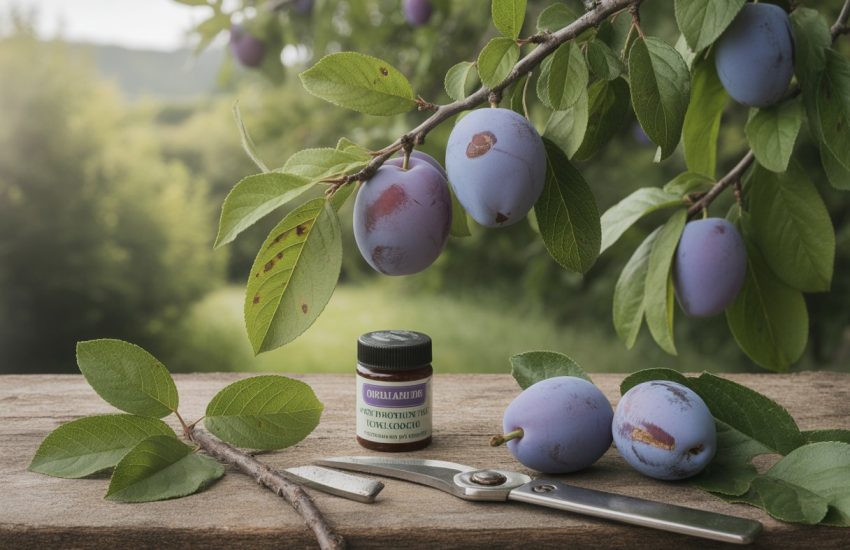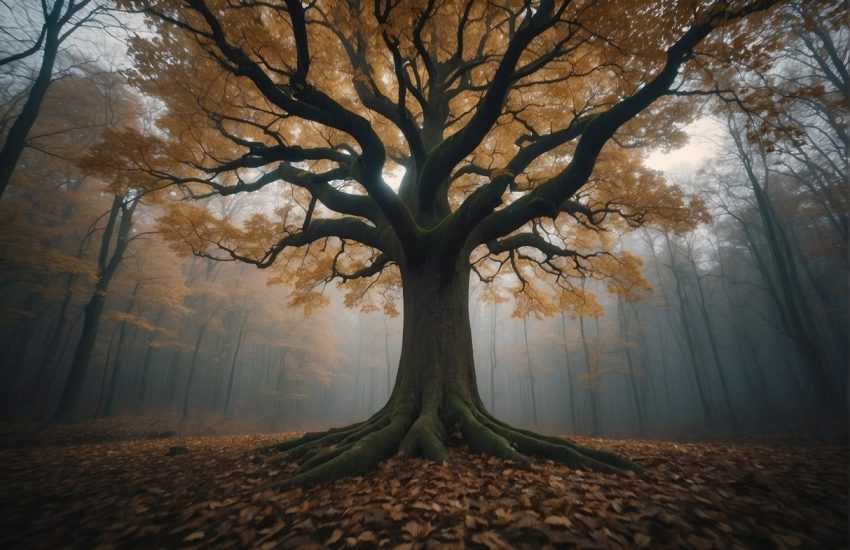Easiest Flowers to Grow from Seed: A Beginner’s Guide (redo-longer article)
Growing flowers from seed can be a rewarding and cost-effective way to fill your garden with beautiful blooms. While some flowers can be difficult to grow from seed, there are plenty of options that are easy for even novice gardeners to cultivate. In this article, we will explore some of the easiest flowers to grow from seed, so you can add color and fragrance to your outdoor space without breaking the bank.
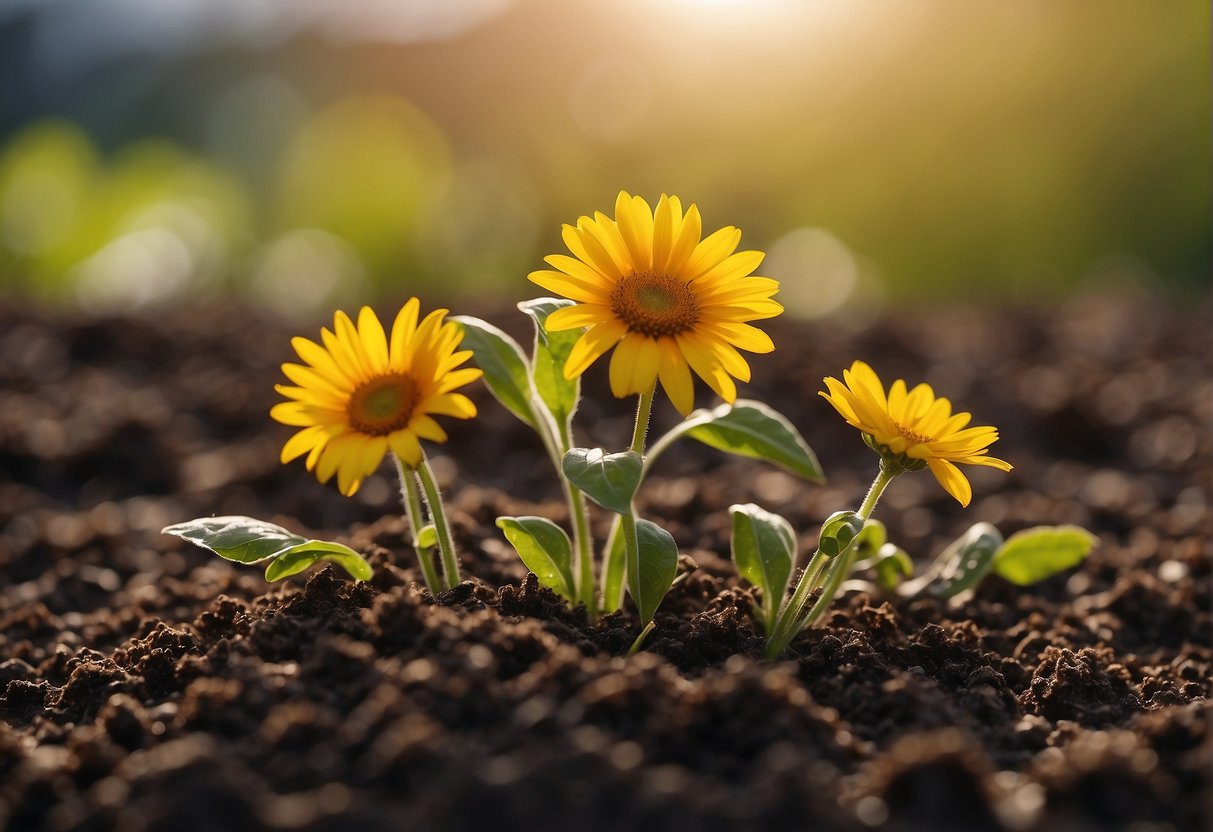
One of the easiest flowers to grow from seed is the marigold. These cheerful yellow and orange blooms are hardy and can tolerate a wide range of growing conditions. They also have a long flowering season, so you can enjoy their vibrant colors well into the fall. Another easy-to-grow flower is the zinnia. These come in a range of colors, from bright pinks and oranges to soft pastels, and can grow up to three feet tall. Zinnias are also great for attracting pollinators like butterflies and bees to your garden.
If you’re looking for a flower that is both easy to grow and has a delightful fragrance, consider planting sweet peas. These delicate flowers come in a range of colors, from pale pink to deep purple, and have a lovely, sweet scent. They also make great cut flowers, so you can bring their beauty indoors. With these and other easy-to-grow flowers, you can create a stunning garden without a lot of time, effort, or expense.
Choosing the Right Seeds for Your Garden
When it comes to growing flowers from seeds, choosing the right seeds is crucial for a successful garden. Here are some tips to help you choose the best seeds for your garden.
Understanding Seed Varieties
There are many different varieties of flower seeds available, each with its own unique characteristics. Some seeds are better suited for certain climates or soil types, while others may require specific growing conditions. It is important to research the different varieties of seeds available and choose the ones that are best suited for your garden.
Optimal Conditions for Germination
In order for seeds to germinate and grow into healthy plants, they require specific conditions. The optimal temperature for germination varies depending on the type of seed, but most seeds require temperatures between 60-75°F (15-24°C). It is also important to consider the frost date in your area, as planting seeds too early can result in frost damage.
To ensure optimal germination, it is recommended to start seeds indoors and provide them with proper lighting, watering, and ventilation. Once the seeds have sprouted and grown into seedlings, they can be transplanted into the garden.
By choosing the right seeds and providing optimal growing conditions, you can easily grow beautiful flowers from seed in your garden.
Best Flowers to Grow From Seed
Growing flowers from seed is an affordable and rewarding way to add color and beauty to any garden. Here are some of the easiest flowers to grow from seed:
Sunflowers and Their Radiant Colors
Sunflowers are a popular choice for their bright and cheery colors. They are also easy to grow and care for, making them a great choice for beginners. Sunflowers come in a variety of colors, including yellow, orange, red, and even bi-colored varieties.
Marigolds: Vibrant and Low-Maintenance
Marigolds are another popular choice for their vibrant colors and low-maintenance nature. They come in shades of yellow, orange, and red, and are a great option for borders, containers, or as a companion plant in vegetable gardens.
Nasturtiums: Edible and Attractive
Nasturtiums are not only attractive, but also edible. They have bright, showy flowers in shades of red, orange, and yellow, and their leaves and flowers can be used in salads or as a garnish. Nasturtiums are also easy to grow and can be planted in both sunny and shady locations.
Zinnias: A Burst of Color
Zinnias are a great option for those looking for a burst of color in their garden. They come in a wide range of colors, including pink, red, orange, yellow, and white. Zinnias are also easy to grow and care for, making them a popular choice for beginners.
Easy Perennials for Lasting Beauty
For those looking for lasting beauty, there are several easy-to-grow perennial flowers that can be grown from seed. Some popular options include black-eyed susans, coneflowers, and daylilies. These flowers will come back year after year, providing long-lasting beauty to any garden.
Overall, these flowers are easy to grow from seed and will add color and beauty to any garden. Whether you’re a beginner or an experienced gardener, these flowers are sure to please.
Planting and Caring for Seedlings
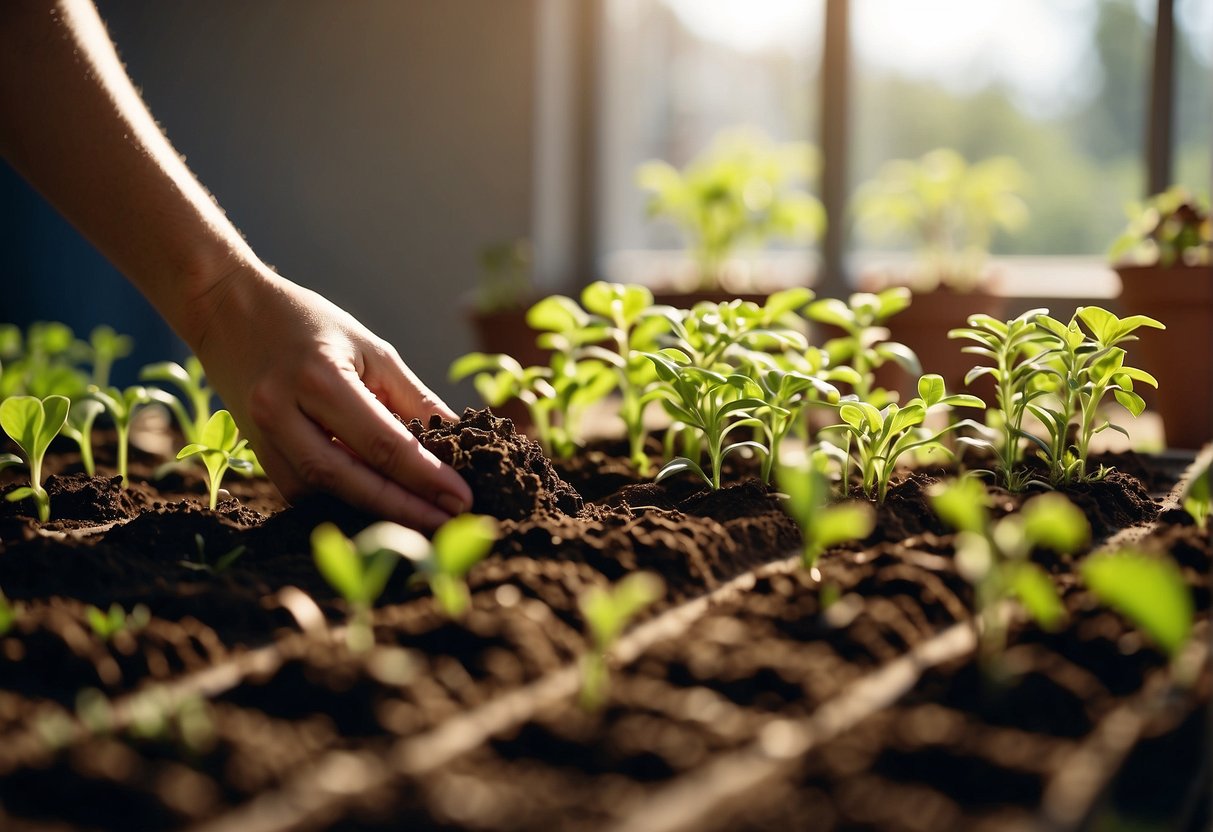
Sowing Seeds Successfully
When it comes to growing flowers from seed, sowing the seeds correctly is crucial for success. The first step is to choose a location with plenty of sunlight. Most flowers require full sun to grow, but some can thrive in partial shade. It’s important to read the seed packet carefully to determine the ideal planting location for the specific flower type.
Next, prepare the soil by removing any weeds, rocks, or debris and loosening the soil with a garden fork. Mix in compost or other organic matter to improve soil quality and drainage. Then, follow the instructions on the seed packet for planting depth and spacing. Some seeds may need to be soaked or scarified before planting to improve germination rates.
After planting, water the seeds gently but thoroughly. Keep the soil moist but not waterlogged, as too much moisture can cause the seeds to rot. Cover the seeds with a light layer of mulch to help retain moisture and protect them from birds and other pests.
From Seedlings to Full Bloom
Once the seeds have germinated and the seedlings have emerged, it’s important to care for them properly to ensure they reach full bloom. Water the seedlings regularly, but be careful not to overwater as this can lead to root rot. Fertilize the seedlings with a balanced fertilizer every few weeks to provide them with the nutrients they need to grow.
As the seedlings grow, they may need to be thinned out to prevent overcrowding. This will allow each plant to receive adequate sunlight and nutrients. When the seedlings have grown to a few inches tall, they can be transplanted into their final location in the garden.
To encourage branching and more flowers, deadhead the spent blooms regularly. This will also help to keep the plant looking neat and tidy. With proper care and attention, your seedlings will grow into beautiful, healthy plants that will provide you with cut flowers all season long.
Attracting Pollinators and Wildlife
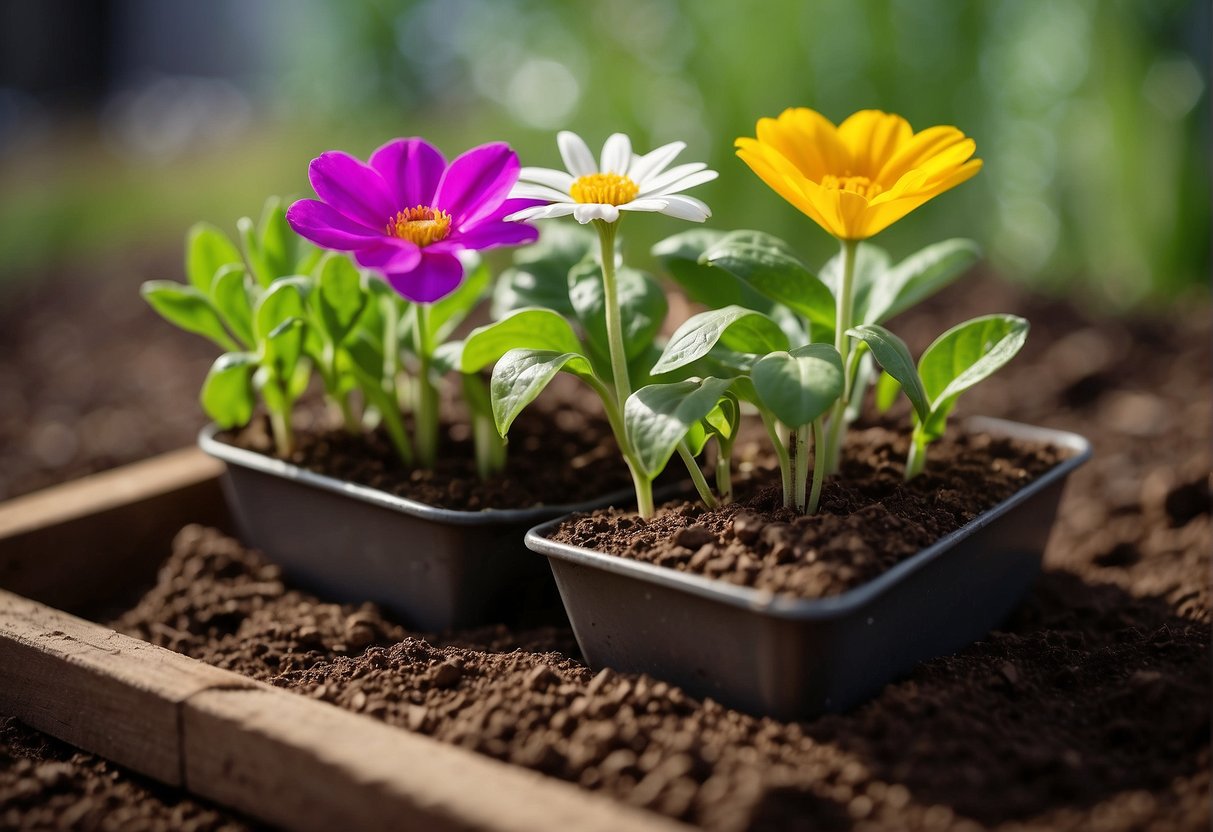
Creating a Pollinator-Friendly Garden
One of the most rewarding aspects of gardening is attracting pollinators and wildlife to your yard. Not only do they add beauty and interest to your garden, but they also play a vital role in the ecosystem by pollinating plants and helping to control pests.
To create a pollinator-friendly garden, it’s important to choose flowers that provide nectar and pollen for bees, butterflies, hummingbirds, and other pollinators. Some easy-to-grow options include:
- Sunflowers: These cheerful flowers are easy to grow from seed and provide abundant nectar and pollen for bees and butterflies.
- Zinnias: With their bright colors and long bloom time, zinnias are a favorite of butterflies and hummingbirds.
- Cosmos: These daisy-like flowers are easy to grow and provide nectar for bees and butterflies throughout the summer.
- Marigolds: These hardy flowers are a great choice for beginners and provide nectar for bees and butterflies.
In addition to choosing the right flowers, it’s important to provide habitat for pollinators and wildlife. This can include:
- Planting native species: Native plants are adapted to the local climate and provide food and habitat for local pollinators and wildlife.
- Providing water: A shallow dish of water can provide a much-needed source of hydration for bees and butterflies.
- Avoiding pesticides: Pesticides can harm pollinators and other beneficial insects, so it’s important to avoid using them whenever possible.
By creating a pollinator-friendly garden, you can enjoy the beauty of flowers while also doing your part to support the ecosystem.
Frequently Asked Questions

What are some hardy annuals that can be sown in autumn?
Some hardy annuals that can be sown in autumn include pansies, violas, calendula, and sweet peas. These flowers can withstand colder temperatures and will bloom in the spring.
What are the easiest perennials to grow from seed?
Some of the easiest perennials to grow from seed are black-eyed Susan, coneflower, and coreopsis. These flowers are low-maintenance and can thrive in a variety of soil and light conditions.
How can you successfully grow summer flowers from seeds?
To successfully grow summer flowers from seeds, it is important to start them indoors in early spring and then transplant them outside after the last frost. It is also important to provide them with plenty of sunlight and water.
Which flowers are known to grow quickly from seeds?
Zinnias, marigolds, and cosmos are known to grow quickly from seeds. These flowers can germinate in as little as 5-7 days and can bloom within a few weeks.
What is the best way to grow flowers from seeds in pots?
The best way to grow flowers from seeds in pots is to fill the pots with a high-quality potting mix and plant the seeds according to their specific planting instructions. It is also important to keep the soil moist and provide the plants with plenty of sunlight.
When is the ideal time to plant flower seeds for optimal growth?
The ideal time to plant flower seeds for optimal growth varies depending on the type of flower. Some flowers, such as sweet peas and pansies, can be sown in the fall for spring blooms. Others, such as zinnias and marigolds, should be sown in the spring for summer blooms. It is important to research the specific planting instructions for each flower to ensure optimal growth.

